This fruits that start with W list is a comprehensive collection of all the fruits beginning with the letter W! From winter squash to watermelon and everything in between; you'll find loads of new-to-you and familiar fruits! As an added bonus, these unique fruits are from all over the world!
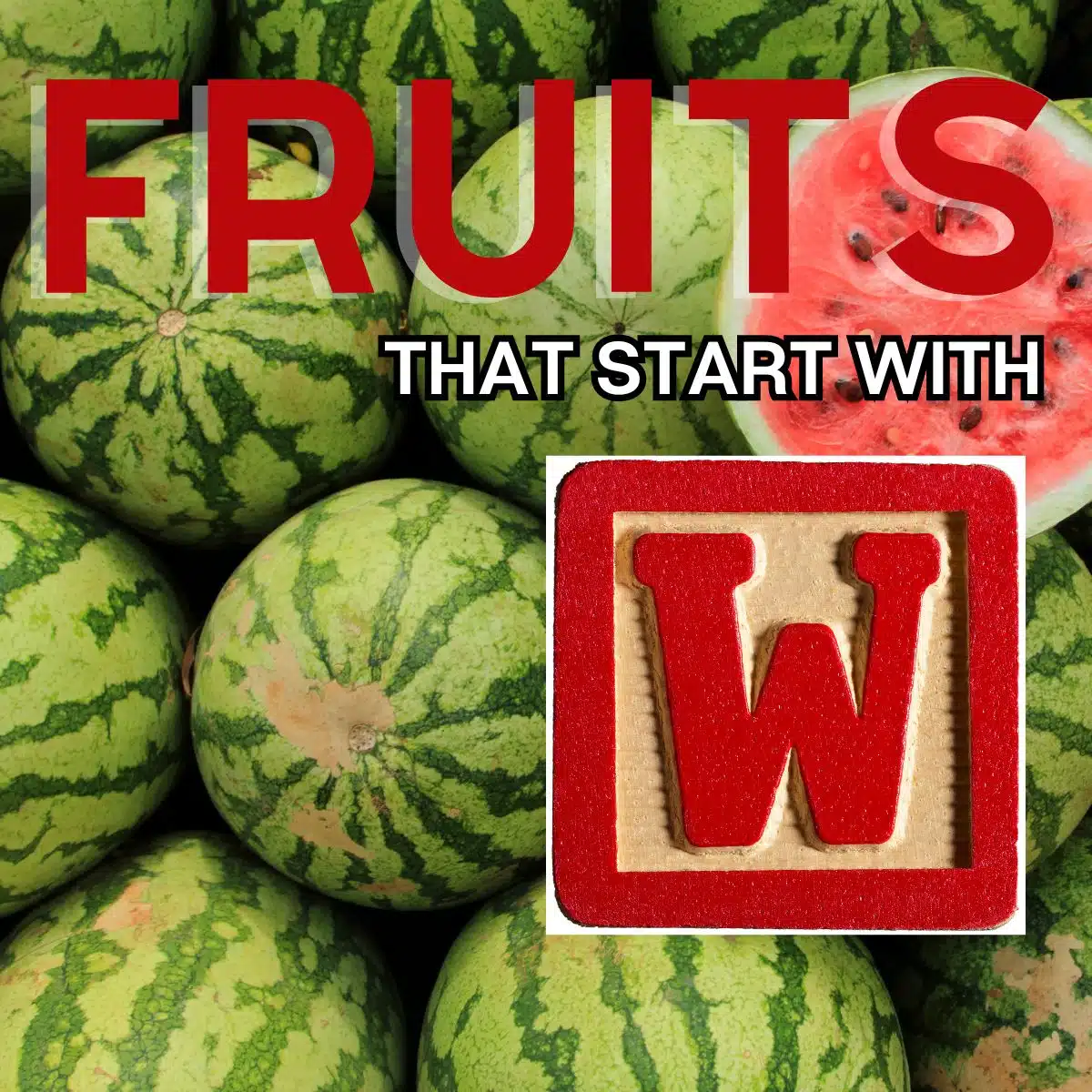
Jump to:
- 21 Fruits Beginning With W
- 1. Walnut
- 2. Wampee
- 3. Watermelon
- 4. Water Apple
- 5. Water Chestnut
- 6. Wealthy Apple
- 7. West Indian Cherry
- 8. White Aspen
- 9. White Currant
- 10. White Mulberry
- 11. White Sapote
- 12. Wild Orange Fruit
- 13. Wild Water Lemon
- 14. Wildbacher Grape
- 15. Williams Pear
- 16. Wine Palm Fruit
- 17. Wineberry
- 18. Winter Melon
- 19. Winter Squash
- 20. Wolfberry
- 21. Wood Apple
- Best Fruits That Start With W
- 📖 Recipe Card
- Fruits That Start With W: 21+ Tasty Fruits To Try Today!
- 💬 Reviews
21 Fruits Beginning With W
I can't believe I've almost completed all of my fruits that start with lists! Today, I've rounded up all of the fruits beginning with the letter W, and there are tons of tasty ones!
I've already tried a handful of the fruits on this list, but I am incredibly excited to explore some new ones! Which ones do you want to try?
1. Walnut
Often mistaken for true nuts, walnuts are actually fruit. There are two main types: the English walnut, tracing its roots to Iran, and the black walnut, native to North America.
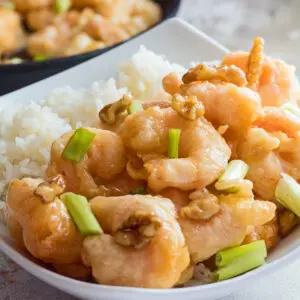
2. Wampee
The wampee, originally from Southeast Asia, is a small citrus fruit about the size of a grape. People typically eat it as a whole fruit, and it's occasionally used in recipes that need a sweet or sour taste.
3. Watermelon
Watermelon, a refreshing and juicy fruit, is a summer favorite that's perfect for staying hydrated. With its vibrant pink or red flesh and dark seeds, watermelon offers a sweet and crisp bite.
Its green outer rind provides a natural protective layer, making it easy to transport and enjoy at picnics or backyard gatherings.

4. Water Apple
Water apples, also called rose, wax, or java apples, originate from Southeast Asia. Found abundantly in Vietnam, they are commonly enjoyed as a handheld snack.
Recognizable by their unique bell shape, these apples come in vibrant hues, ranging from pink to bright red.
5. Water Chestnut
Water chestnuts are named for their similarity to chestnuts, but they're not nuts; they grow underwater in marshy places.
These small fruits have a crisp texture and slightly sweet flavor, making them delicious raw, grilled, pickled, or boiled.
Widely used in Chinese cuisine, they're often consumed raw in China.
6. Wealthy Apple
In the 1870s, Peter Gideon of Minnesota crafted the wealthy apple. Before this, Minnesota only had crab apples.
He mixed the Siberian crab apple tree with different trees from Maine, producing a robust red apple.
Bursting with sweetness and a hint of tartness, this apple is an excellent choice for snacking or adding a refreshing touch to salads.
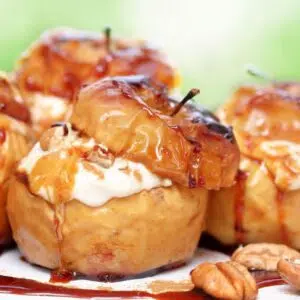
7. West Indian Cherry
The West Indian cherry, also called acerola cherry or Barbados cherry, is well-loved for its rich vitamin C content.
With its vibrant, deep red color, this fruit is a favorite for making delicious treats like jams, wine, jellies, popsicles, pies, and ice cream.
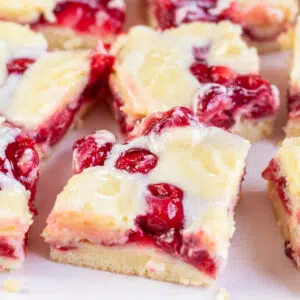
8. White Aspen
White aspen fruit, originally from Eastern Australia, features small white berries with a flavor that falls somewhere between a lemon and an orange.
These berries are versatile, perfect for cooking with poultry or seafood, adding to salads, and creating preserves, cocktails, or juice.
>>>>See all of my recipes here<<<<
9. White Currant
White currants are just the albino version of red currants. Similar in many ways, red currants are commonly found in recipes, while white currants take the spotlight in preserves, wines, and syrups.
The preserves they create usually have a slightly pink hue.
10. White Mulberry
White mulberries, a fruit rich in alkaloids and flavonoids, have long been a traditional remedy in China and Japan.
Enjoyed during fall and winter, these berries can be eaten raw or cooked, with sweet and sour jelly being popular.
11. White Sapote
White sapote, a beloved fruit in Mexico, Costa Rica, and Central America, is known for its sleep-inducing properties.
Despite the risk of inducing sleepiness when consumed in excess, individuals continue to use this fruit in juices, smoothies, salsa, and various dishes.
12. Wild Orange Fruit
This fruit might look like part of the orange family, but it's not! Wild oranges from Australia are a favorite bush snack because they're sweet and tangy.
You can enjoy them as a quick, raw treat by peeling and slicing them, which is easy to do. Since they're pesticide-free, the skin might still have a hint of green even when ripe.
13. Wild Water Lemon
Wild water lemons, resembling passion fruit but slightly smaller, reach a maximum size of about 1 inch. When ripe, their skin turns either red or yellow.
Thriving in warm, humid, and tropical regions like other passion vines, these fruits are versatile – enjoyed either raw or juiced.
14. Wildbacher Grape
The wildbacher grape is a fruit known for its small, dark purple berries. With a distinctive tart flavor, they are commonly used in winemaking; the wildbacher grape contributes a rich color and bold taste to red wines.
15. Williams Pear
Also called Bartlett pears, Williams pears are widely enjoyed worldwide, with popularity extending beyond Asia. When fully ripe, these pears have a nice shape and thin, yellow (or occasionally red) skin.
Ideal for juices, wine, cocktails, and desserts, Williams pears feature creamy, crisp flesh that becomes even more flavorful over time.
While their low moisture content makes them excellent for baking, they shine when eaten raw, especially in salads.

16. Wine Palm Fruit
Wine palm fruits have a sleek, golden yellow or orange-red skin and offer a combination of sweetness and tartness. Whether enjoyed fresh or cooked, they are both juicy and chewy.
17. Wineberry
Wineberries from Japan, China, and Korea are small fruits known for their vibrant red or orange hues.
Bursting with a great mix of tartness and sweetness, these tiny berries can be enjoyed whole or sliced to your liking.
Transform them into a tasty drink, and whether you opt for fresh, in-season-picked fruit or convenient frozen berries, wineberries are a delicious treat.
18. Winter Melon
Winter melon, also known as wax gourd, originates from South and Southeast Asia and is grown extensively in these regions.
Its culinary uses differ across nations, and one notable feature is its ability to preserve for an extended period, similar to winter squash.
19. Winter Squash
Winter squashes are often mistaken for vegetables, but they're actually fruit, distinct from their summery counterparts. Unlike summer squash, you can't consume the skin or rind of winter squashes.
These fruits come in many sweet and nutty varieties, perfect for roasting or adding to soups.
Pumpkins, a well-known type of winter squash, are particularly popular, especially during Halloween celebrations.
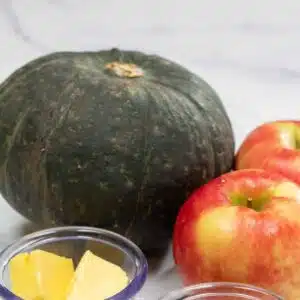
20. Wolfberry
Wolfberries, also known as goji berries, belong to the Nightshade family, alongside eggplants and tomatoes.
Originating in China, where they've been part of the cuisine for centuries, these berries got their name from the Chinese phrase "go-tzu," meaning "wolf's eye."
Fresh wolfberries have a tart flavor, similar to cranberries and cherries, making them ideal for juices, drying, or eating raw.
21. Wood Apple
The wood apple is green, round, or slightly oval-shaped in its early stages. Similar to green tomatoes, unripe wood apples taste and look alike.
They have a tough, coconut-like peel that's hard to crack open. Once opened, the pungent smell, similar to blue cheese, might surprise you.
However, the flavor is entirely different—sweet and acidic, resembling tamarind.
Best Fruits That Start With W
Some familiar favorites of mine are watermelon and winter squash (specifically buttercup squash and pumpkins!) However, I also love using walnuts in desserts for some added crunch!
Did your favorite fruit that starts with W make the list? Leave a comment and let me know if I missed anything!
Do you love a recipe you tried? Please leave a 5-star 🌟rating in the recipe card below and/or a review in the comments section further down the page.
Stay in touch with me through social media @ Pinterest, Facebook, Instagram, or Twitter! Subscribe to the newsletter today (no spam, I promise)! Don't forget to tag me when you try one of my recipes!
📖 Recipe Card
Fruits That Start With W: 21+ Tasty Fruits To Try Today!
Ingredients
- 1 watermelon (ripe- *see note)
- salt or sugar (optional- *see note)
- mint (optional, freshly chopped- *see note)
Instructions
- First, line your dehydrator with parchment paper or fruit leather sheets. Then, slice your 1 watermelon into large wedges and remove the rind with your knife.
- Now, slice the wedges of watermelon into smaller strips or pieces. The thinner, the better.
- Add the watermelon pieces to your prepared dehydrator and close the door. *You can sprinkle optional salt or sugar, Tajin, or fresh chopped mint after arranging the watermelon on your trays or rings.
- If your dehydrator has settings, set it to 'fruit' or about 135°F (57°C). Set your timer for 12 hours and let the dehydrator do its thing.
- This could take up to 24 hours, so check your jerky at the 12 hour mark and pop it back in if it needs to go longer. Your watermelon jerky is done when it is completely dry and breaks if you bend it. Enjoy!
Notes
- When looking for a ripe watermelon, you want it to have a creamy yellow underbelly. This means the fruit sat in the field long enough to ripen in the sun. It should feel heavy for its size (when watermelon is at its peak it is 92% water). Avoid any melons with blemishes, dents, or bruises.
- If possible, grab a seedless watermelon. You will have to pick out the black seeds because they are hard, but the white seeds are fine.
- My miniature watermelon (sugar baby variety) filled 3 Excalibur dehydrator sheets, or 4 of the rings in my countertop vertical flow dehydrator.
- If you want watermelon jerky but don't have a dehydrator, you can make it in the oven. Set your oven to the lowest temperature (200°F or lower). Place the watermelon pieces on a wire cooling rack that is set on top of a rimmed baking sheet and pop it in the oven. Depending on the temperature, this could take anywhere from 12 to 24 hours, so after the 12 hour mark check it every hour or so.
- Keep in mind that the dehydrating time is relative and depends on many factors like temperature, the size of your watermelon pieces, and your dehydrator. Check frequently and use your best judgment.
- To store: Keep watermelon jerky in an airtight container for up to 3 months. *I store mine in jars if I know that I'll be eating or using the watermelon soon, or vacuum sealed into mylar bags for longer storing.

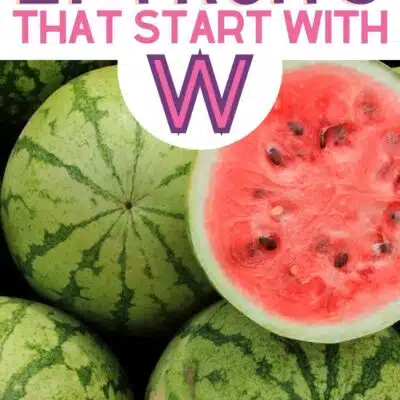

Comments
No Comments